Hungarian cuisine is Continental - Central European with some Eastern European elements. Primarily based on meats, seasonal vegetables, dairy products and fresh bread. During our history we lived together with other nations such as the Turks or Austrians, therefore we have taken over the usage of numerous spices, for example the paprika which is one of the main component of the Hungarian cuisine.
Hungarian gastronomy is much more than Gulyás it is truly mouth watering, rich, colorful and unique. We collected some specialty what you shouldn’t miss out from your gastro plans while you are in Budapest.
1. Lángos – Hungarian fried bread
Even Though it is a very heavy street food - a deep fried flat bread, no summer could ends for a Hungarian without a real garlic flavoured lángos with sour cream and grated cheese on the top. What makes it so beloved, is the endless varieties of toppings.
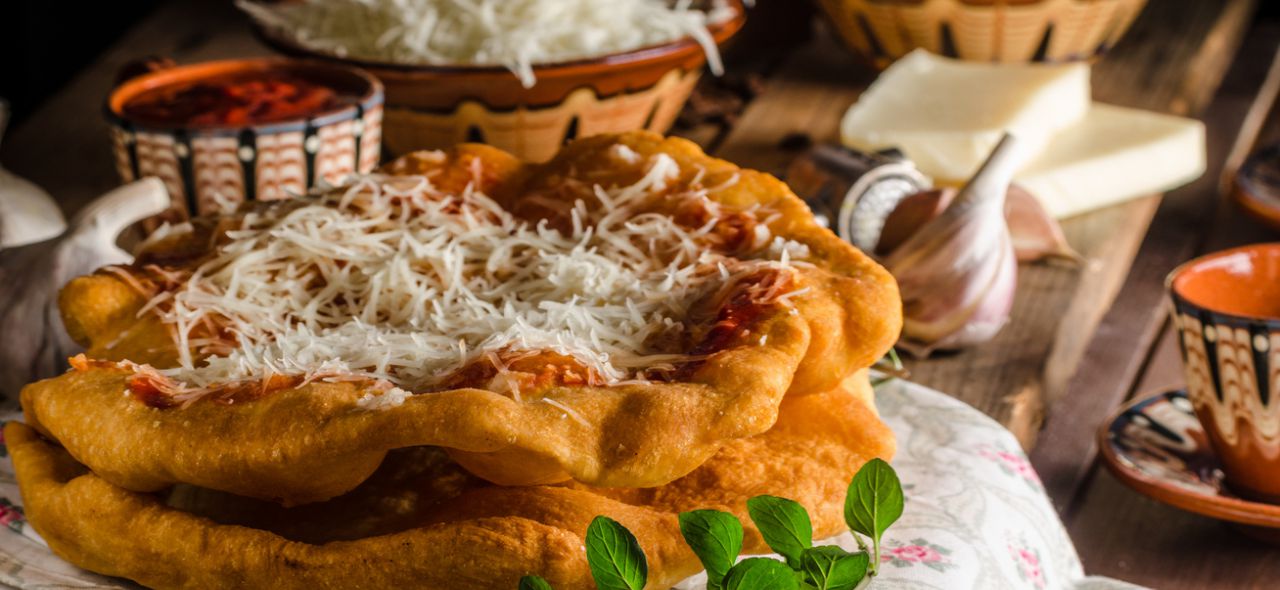
2. Kürtöskalács – Chimney cake
Winter time when you walking around in Budapest’s downtown, don’t be surprised to feel the mouth watering smell of cinnamon and vanilla in every second corner. The traditional winter street food for Hungarians is this tasty – warm delicacy the Chimney Cake. A special sweet spiral cylindered bread made from sweet yeast dough baked over charcoal and coated in plenty of sugar.
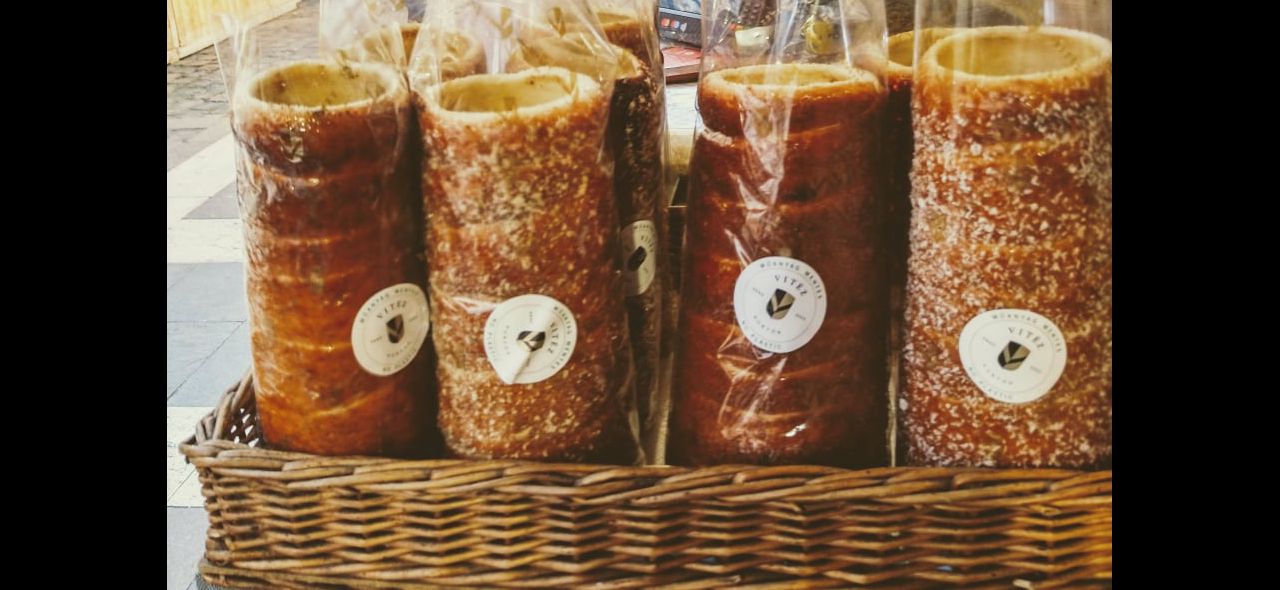
3. Hurka & Kolbász – Black pudding & Sausage
Sausage and black pudding is an all year favourite - beloved star of the street food festivals. Again it is not a light food, not the best choice for those who are on diet, but a fantastic culinary experience with rich flavours. It is usually made from pork, the best ones are from Mangalica porks a traditional Hungarian pork. Try it with mustard, fresh bread and pickles.
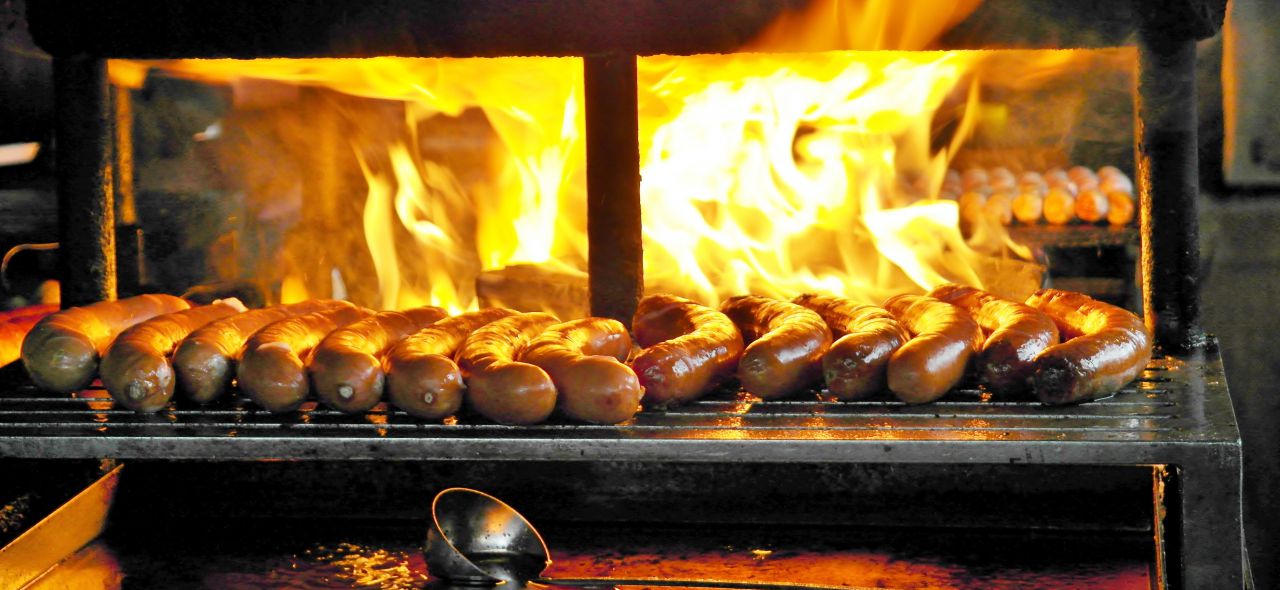
4. Halászlé – Fisherman’s soup
Traditional Fisherman’s soup is connected to Christmas, Hungarian families prepare and consume it all year, but at Christmas time it is definitely a must on the tables! There are several ways to prepare it, depends on the traditions of the region where you live, but the main component is a lot of paprika and river fishes like carp and bream. It has a totally different taste comparing with the fish soup of the mediterranean cuisine.
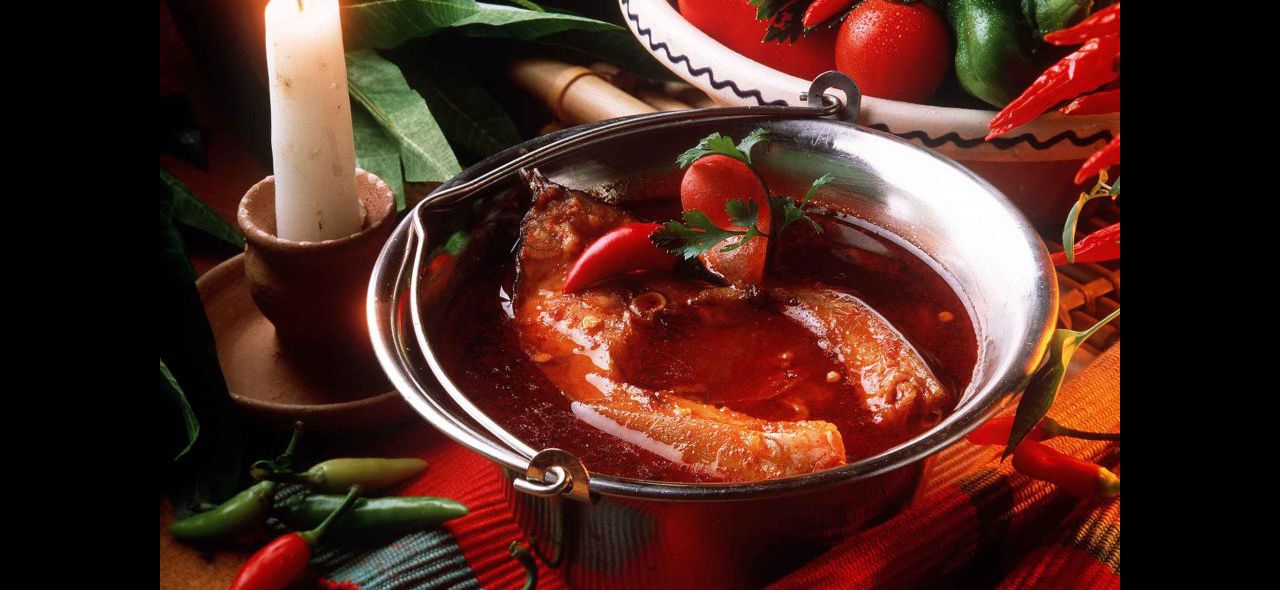
5. Húsleves – Consommé / Broth
Beef or hen broth is not just a typical beloved soup of the Hungarians, it is also a classical favourite of other nations also. It has a special place in Hungarian gastronomy, something which defines it. A rich hen broth with carrot, mushroom, green pea, parsley is a traditional starter at a Sunday lunch, when families get together for a meal.
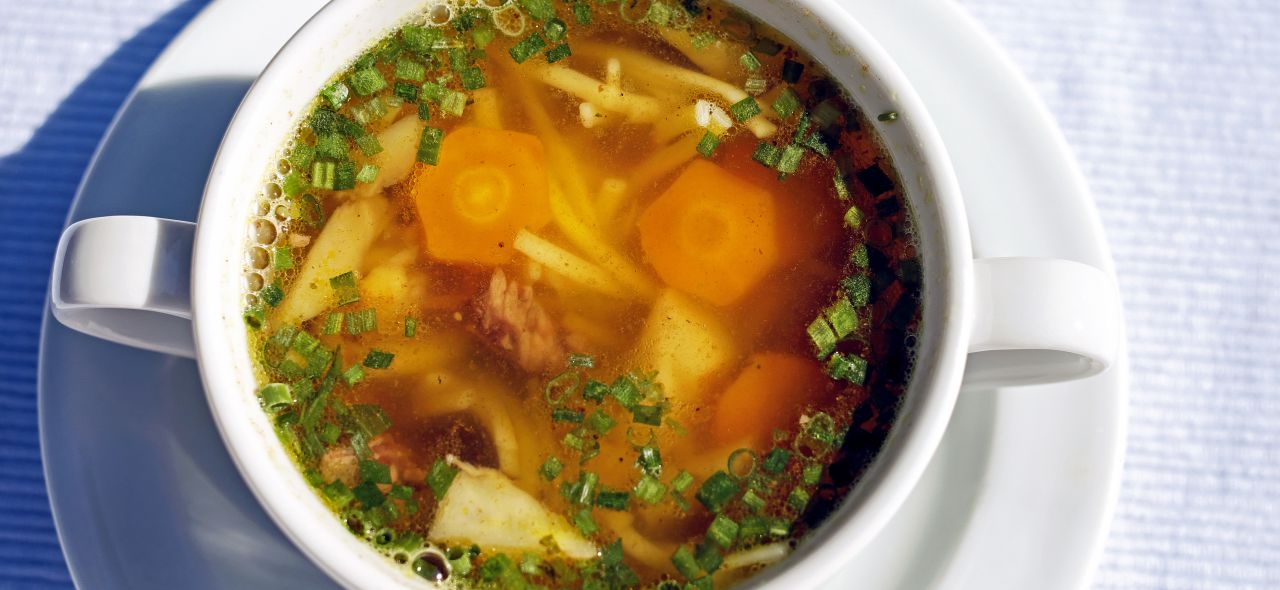
6. Főzelék - Vegetable stew
There is no word in English for this special Hungarian food. For first sight it looks like a cream soup, but it is not a soup. We can prepare it from various vegetables for example from green pea, potatoe, carrot, lentil, bean, kohlrabi, green beans, squash, spinach, sorrel. We not mixing the vegetables, the main component of each stew is only one vegetables. Most of the times we served it with meatloaf or sausage on the side.
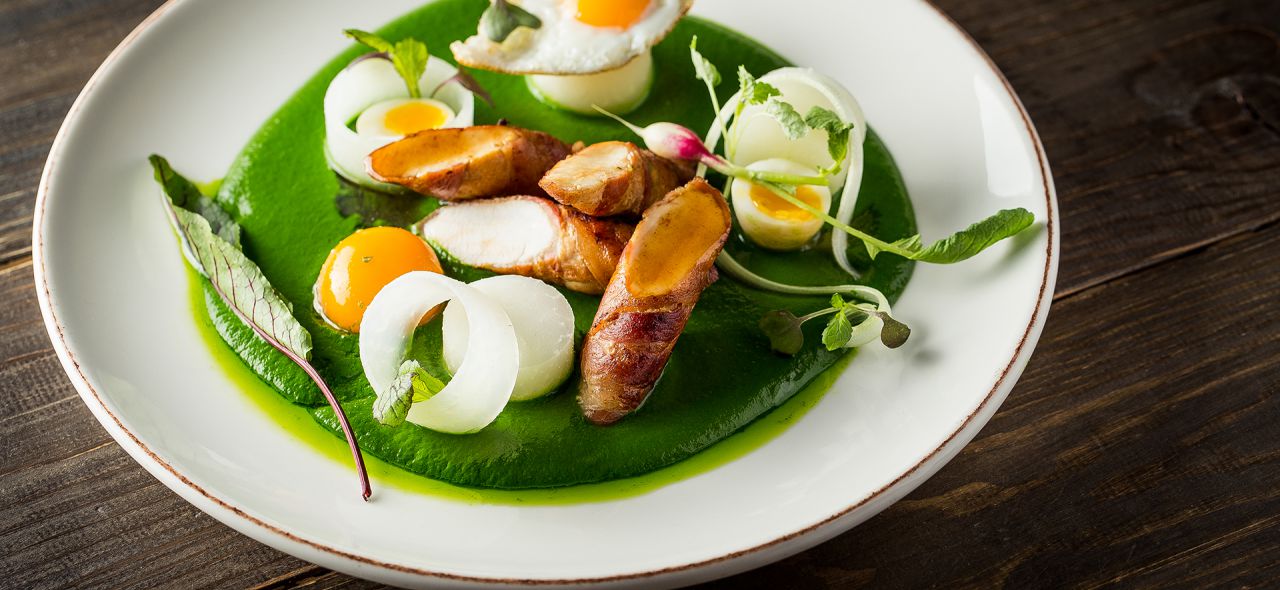
7. Töltött káposzta/ Székelykáposzta – Stuffed cabbage / Székely cabbage
Stuffed cabbage is a well known meal in Central and Eastern Europe, and also an unmissable dish of the Hungarian kitchen. It has a prominent role during weddings and Christmas dinners. According to Hungarian traditions we serve this tasty, but heavy „snack” on weddings after midnight. The Hungarian töltött káposzta made of cooked cabbage (mostly pickled) filled with pork mince, mixed rice and flavored with the unmissable paprika, pepper and sour cream.
Székelykáposzta is a pickled cabbage, seasoned with paprika and garlic with slow cooked pork.
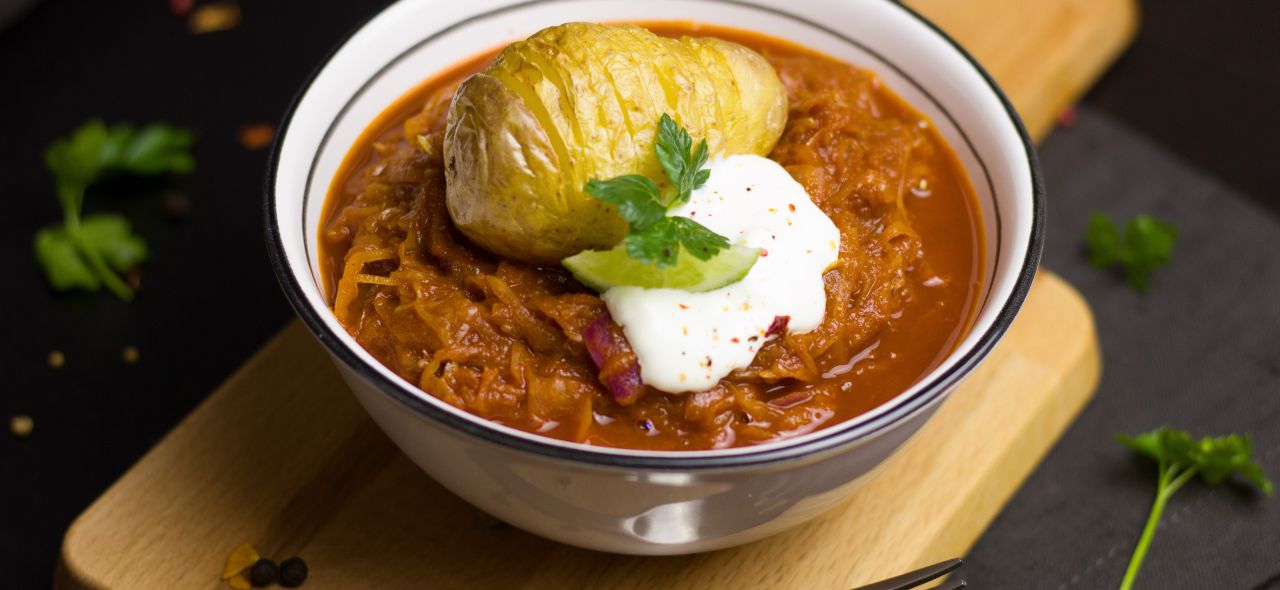
8. Marhapörkölt – Beef stew
The most common stew is from pork, but the tastiest is from beef, cooked with onion, paprika and other spices, resulting in a juicy dish served with another Hungarian gastro-curiosity, the nokedli (egg noodle dumpling). Put a little sour cream on the top to dine like locals do, and eat it with sour cucumber salad, also with sour cream. It is a traditional dish on a Sunday lunch, after the hen broth.
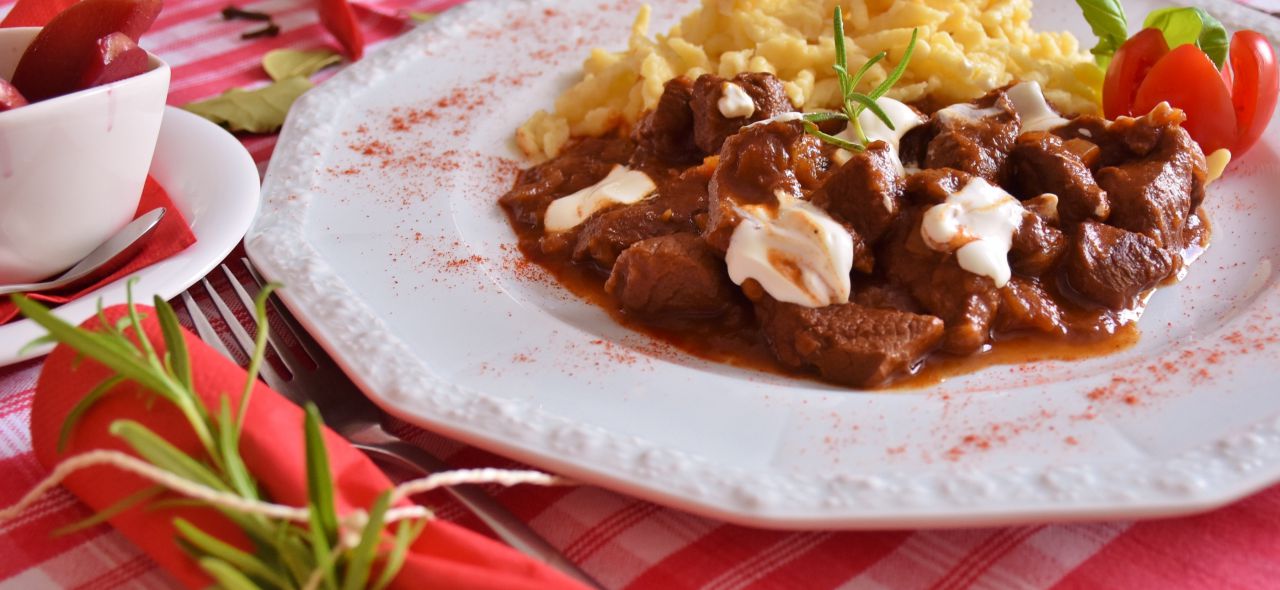
9. Paprikás csirke – Chicken stew with sweet paprika cream
Chicken stew with rich flavoured paprika cream and „nokedli” – egg noodle, is one of the favourite dishes in Hungary. It is a beloved choice because it is cheap to prepare, but fulfilling and delicious. Good for childrens because it is not as heavy as the dishes introduced before. It is very important to use chicken drumstick and wings, but not the breast because it would be too dry for this meal. In a well cooked chicken stew the flash divide from the bone without any extra effort, easily.
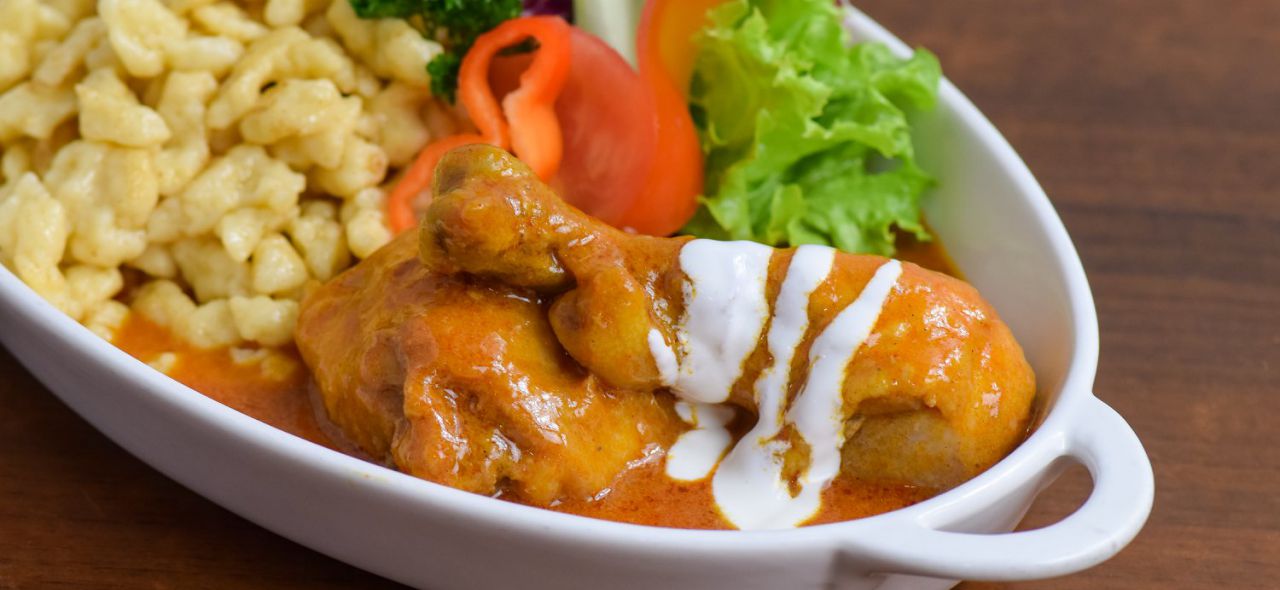
10. Palacsinta – stuffed crepes
Hungarian „pancake” or crépe, we called it pancake, but it is not similar to an American pancake, which traditionally served with maple syrup and blueberries. We usually stuffed these thin crepes with apricot jam or other types of jams, sweet cottage cheese, chocolate, cinnamon, or nutella with some icing sugar on the top. But the variety how to prepare is up on your fantasy, you can prepare salty crepes as well. For example another traditional Hungarian dish is the Hortobágyi meat crepes - a strange love child of 2 traditional Hungarian meal, a salty pancake stuffed with minced chicken paprikás.

10+1. Gulyásleves – Goulash soup
And last but not least, the famous Goulash, we left it last for purpose – because there are no people on Earth who never heard about Goulash at least one in their lives. It is a national symbol a real iconic food. The name derives from the gulyás (herdsmen), who made their rich and fulfilling dish in a cauldron over an open-fire. Today, a cauldron made goulash is considered as the most authentic version of all. It can happen that you already tried it in other countries, but most of the times other nations prepared it differently, they called Goulash, but what they prepare is a stew. A traditional Hungarian Goulash is somewhere between a soup and a stew, with beef, potatoe, carrots, garlic, parsley and a lot of sweet and spicy paprika. The best way to eat it with fresh bread on the side.
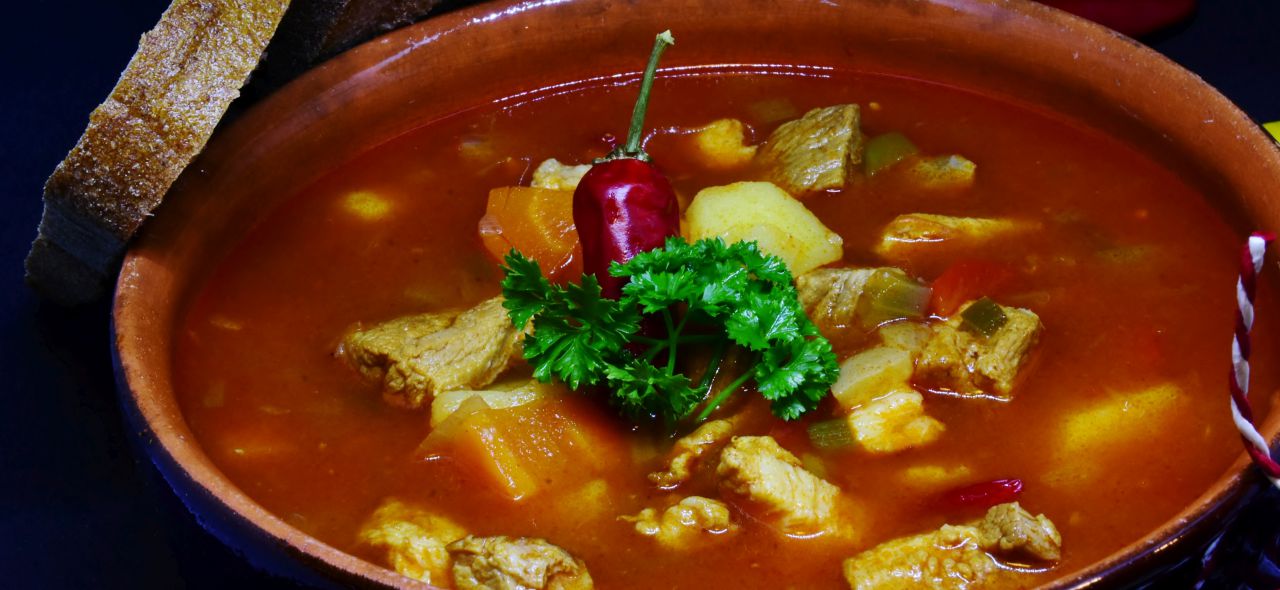
Source of pictures and illustrations: femina.hu, mindmegette.hu, pixabay, sokszinuvidek.24.hu, vitalliving.hu, Zeller Bistro, kastélyétterem.com,